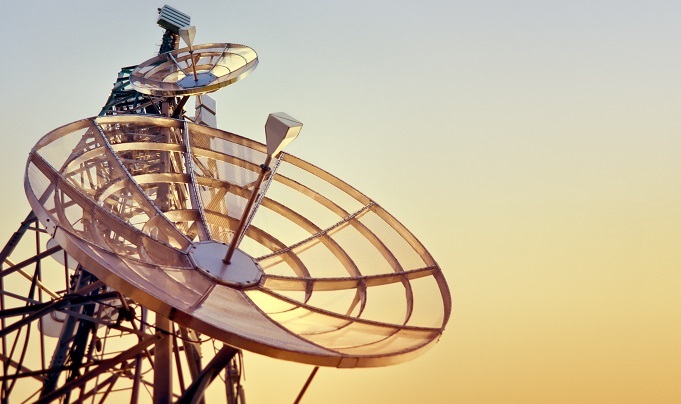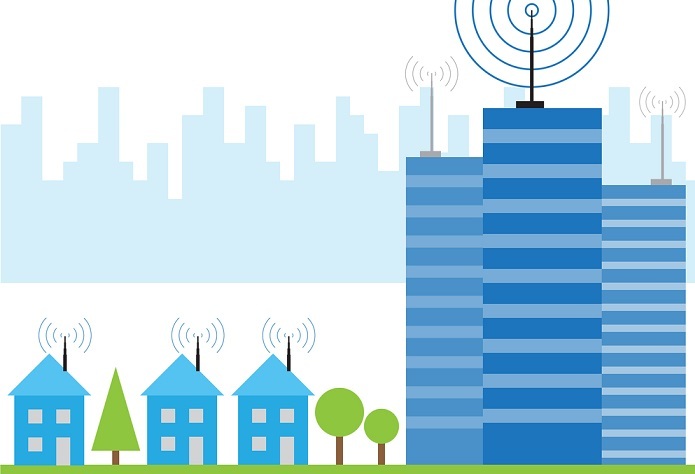
 Data Structure
Data Structure Networking
Networking RDBMS
RDBMS Operating System
Operating System Java
Java MS Excel
MS Excel iOS
iOS HTML
HTML CSS
CSS Android
Android Python
Python C Programming
C Programming C++
C++ C#
C# MongoDB
MongoDB MySQL
MySQL Javascript
Javascript PHP
PHP
- Selected Reading
- UPSC IAS Exams Notes
- Developer's Best Practices
- Questions and Answers
- Effective Resume Writing
- HR Interview Questions
- Computer Glossary
- Who is Who
What is the full form of DBS?
Introduction
Direct Broadcast Satellite (DBS) transmission technology delivers television and radio signals directly to households and businesses. In order to receive signals from satellites in geostationary orbit, DBS uses smaller dish antennas, often with a diameter of less than a meter. The signals are scrambled, encrypted, and transmitted across a specific frequency band to the receiving antenna, where they are decrypted and shown on the TV.

In locations where cable or terrestrial television service is limited or insufficient, DBS systems are popular because they may provide an extensive range of channels, including high-definition content. Internet services and other multimedia content are now included in the usage of DBS.
Technical Components of DBS
A Direct Broadcast Satellite (DBS) system has the following technical components
Geostationary satellites which revolve the Earth at a height of around 36,000 km, are used by DBS systems. The broadcast signals are sent by the powerful transmitters on board these satellites.
Broadcasting Center The development and dissemination of programs for satellite broadcasts are the responsibilities of the broadcasting center. This can include films, television shows, and other different kinds of multimedia content.
Compression and encryption In order to save bandwidth use and secure the content's copyright, the content is compressed and encrypted before transmission.
Up-linking Using an uplink location, the compressed and encrypted content is transmitted to the satellites. Using a powerful antenna, an uplink station transfers the content it has obtained from the broadcasting center to the satellite.
Satellite Receiver A satellite receiver receives satellite transmissions. At the subscriber's location, a small dish antenna is typically installed.
Decoding and Display The subscriber's television or other multimedia device will display the decoded signals that were obtained.
Conditional Access System (CAS) CAS uses a valid subscription or decryption key to require that it be entered before the data can be accessed, limiting access to the content.
Advantages and Disadvantages of DBS
Advantages of DBS
Numerous channels DBS provides a number of channels, some of which are in high definition and are not always offered by traditional cable or terrestrial television networks.
Signal performance In contrast to other broadcasting techniques, DBS provides high-quality signals for reception with less interference, which enhances the overall quality of the visuals and audio.
Accessibility DBS is available where cable or terrestrial television services are few or unavailable.
Mobility DBS is a wonderful alternative for those who are frequently on the road, such as RV enthusiasts, because it is simple to install and transport.
Less expensive In places with limited rivalry, DBS may be less expensive than regular cable or terrestrial television services.
DBS Disadvantages include
Dependence on weather Bad weather, such as a lot of rain or snow, might interfere with DBS signal reception and prevent uninterrupted broadcasting.
Installation DBS needs to be installed by a professional, which may be expensive and time-consuming.
Membership charge DBS services have a monthly membership charge, which may add up over a period of time and get costly.
Limited signal availability In some locations, like isolated or hilly places, where objects may impede the signal, DBS signal availability may be limited.
Latency When used for interactive applications like gaming or live events, DBS's modest signal transmission latency can be experienced.
Comparison of DBS with other satellite TV technologies
One of the three main satellite TV technology types, including Direct-to-Home (DTH) and Free-to-Air (FTA), is DBS (Direct Broadcast Satellite). Here is how DBS compares with the following other satellite TV inventions
-
DBS vs. DTH Both DBS and DTH are satellite-based transmission technologies that deliver signals for television broadcasts directly to residences.
The primary distinction is that DTH employs larger dish antennas (generally approximately 2 meters in diameter) for improved signal reception whereas DBS normally uses smaller dish antennas (less than one meter in diameter). DTH is often costlier and offers more channels than DBS.
-
FTA vs. DBS A limited number of channels are available through FTA, a sort of satellite TV that does not need a monthly charge.
In contrast, DBS charges a monthly fee and provides a greater selection of channels, including premium programming like movies and sports. For enhanced signal reception, FTA often employs bigger dish antennas than DBS.

In summary, DBS is an excellent choice for customers who agree to paying a monthly price and want access to a greater variety of channels, including premium programming. If you want better signal reception and are ready to pay more for it, DTH is a better alternative. FTA is an excellent choice for people who just need a few free channels and are ready to utilize bigger dish antennas and put up with worse signal quality.
Conclusion
In conclusion, the satellite-based Direct Broadcast Satellite (DBS) transmission technology delivers television and radio signals directly to households and businesses. It is available in locations with limited or no access to cable or terrestrial television service and offers a large selection of channels, including high-definition content. DBS is an excellent choice for those who tend to be on move because it is portable and is simple to install and relocate. It does have some drawbacks, though, such as the cost of expert installation, vulnerability to weather impact, and the cost of membership. DBS stands out as an excellent option for people who want access to a greater number of channels, including premium programming, and agree to paying a monthly price as compared to other satellite TV technologies like DTH and FTA.
FAQs
Q1. What kind of tools do they need for DBS?
Ans: A satellite receiver, a dish antenna, and a DBS service provider membership are required.
Q2. Can they receive DBS if they live in a remote area?
Ans: DBS is an excellent option for people who live in distant locations since it may be accessed in places where cable or terrestrial television coverage is scarce or nonexistent.
Q3. Can severe weather have an impact on DBS?
Ans: Bad weather, such as persistent rain or snow, might interfere with DBS signal reception and prevent programs from operating successfully.

